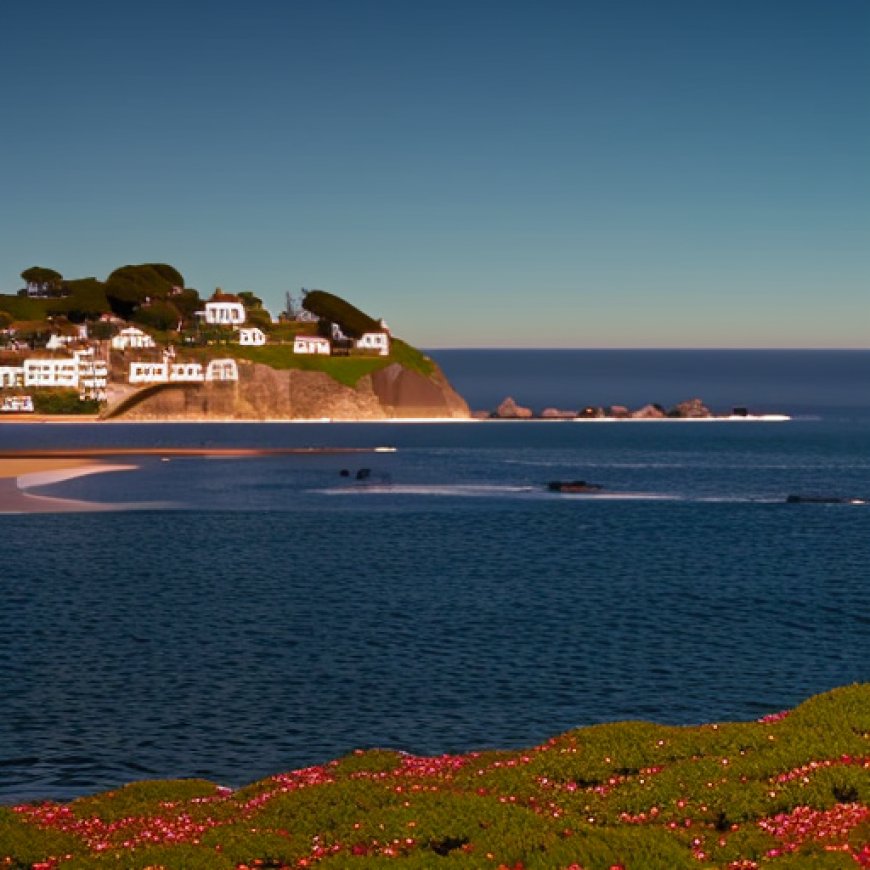Sonoma County Supervisors approve Local Coastal Plan
Sonoma County Supervisors approve Local Coastal Plan County of Sonoma


Local Coastal Plan Update Approved by Sonoma County Board of Supervisors
July 18, 2023
Santa Rosa, CA – The Sonoma County Board of Supervisors unanimously approved an updated version of the Local Coastal Plan, a foundational planning document that regulates land use and protects resources along the 55-mile shoreline. The plan will now be reviewed by the California Coastal Commission for certification.
Supervisor Lynda Hopkins, who represents west Sonoma County and the coast, emphasized the importance of the Local Coastal Plan in enhancing environmental protections and promoting sustainable practices. She stated, “The Sonoma County coast is not just a scenic treasure but a series of irreplaceable ecosystems that we’ve committed to safeguarding.”
The update to the Local Coastal Plan, which spans 963 pages, addresses various changing conditions on the coast, including climate change adaptation, safeguarding public access, protecting water resources, conserving coastal ecosystems, preserving agriculture, and mitigating hazards and wildfire resiliency. The plan aims to make the regulations more modern and user-friendly.
Policy Decisions Made by the Board of Supervisors:
- Allowed for replacement and installation of fencing for existing and proposed agricultural operations.
- Prohibited pesticides in cases where their application would significantly degrade environmentally sensitive habitat or coastal water quality or harm wildlife.
- Added a statement to the Public Access Element emphasizing collaboration with willing sellers to achieve acquisition and pursue public access goals.
- Strengthened site-specific policies to ensure future development meets strict environmental guidelines and is consistent with the historic character of the communities.
- Prohibited desalination utility projects except where necessary for the preservation of health and safety of existing development.
- Prohibited facilities that support the development of offshore energy production or shortage, in response to a proposal from an Alabama developer.
The Local Coastal Plan update underwent an 11-month process that involved extensive public outreach, research, and publication of multiple drafts. The Planning Commission recommended the draft plan after nine public meetings and 35 hours of deliberation and public input. The Board of Supervisors also held a workshop last summer to provide additional opportunities for review and feedback.
After certification by the California Coastal Commission, Permit Sonoma will begin implementing the Local Coastal Plan by amending the Coastal Zoning Ordinance and Coastal Administrative Manual. This implementation process will include further opportunities for public input.
To read the updated Local Coastal Plan, click here.
Contact Information:
- Matt Brown, Communications Specialist
575 Administration Drive, Suite 104A
Santa Rosa, CA 95403
###
SDGs, Targets, and Indicators in the Article
1. Which SDGs are addressed or connected to the issues highlighted in the article?
- SDG 13: Climate Action
- SDG 14: Life Below Water
- SDG 15: Life on Land
The article addresses issues related to climate change adaptation, protecting water resources, conserving coastal ecosystems, and preserving agriculture. These align with SDG 13, SDG 14, and SDG 15.
2. What specific targets under those SDGs can be identified based on the article’s content?
- SDG 13.1: Strengthen resilience and adaptive capacity to climate-related hazards and natural disasters.
- SDG 14.2: By 2020, sustainably manage and protect marine and coastal ecosystems to avoid significant adverse impacts.
- SDG 15.1: By 2020, ensure the conservation, restoration, and sustainable use of terrestrial and inland freshwater ecosystems and their services.
The article mentions the need for adapting to climate change, protecting water resources, and conserving coastal ecosystems, which align with these specific targets.
3. Are there any indicators mentioned or implied in the article that can be used to measure progress towards the identified targets?
The article does not explicitly mention any indicators to measure progress towards the identified targets. However, indicators such as the reduction of greenhouse gas emissions, improvement in water quality, increase in protected marine and coastal areas, and restoration of degraded ecosystems can be used to measure progress towards the identified targets.
Table: SDGs, Targets, and Indicators
| SDGs | Targets | Indicators |
|---|---|---|
| SDG 13: Climate Action | 13.1: Strengthen resilience and adaptive capacity to climate-related hazards and natural disasters. | Indicators could include reduction in greenhouse gas emissions, implementation of climate change adaptation measures, and improvement in disaster preparedness. |
| SDG 14: Life Below Water | 14.2: By 2020, sustainably manage and protect marine and coastal ecosystems to avoid significant adverse impacts. | Indicators could include increase in protected marine and coastal areas, improvement in water quality, and conservation of marine biodiversity. |
| SDG 15: Life on Land | 15.1: By 2020, ensure the conservation, restoration, and sustainable use of terrestrial and inland freshwater ecosystems and their services. | Indicators could include restoration of degraded ecosystems, increase in protected terrestrial areas, and improvement in water resource management. |
Behold! This splendid article springs forth from the wellspring of knowledge, shaped by a wondrous proprietary AI technology that delved into a vast ocean of data, illuminating the path towards the Sustainable Development Goals. Remember that all rights are reserved by SDG Investors LLC, empowering us to champion progress together.
Source: sonomacounty.ca.gov

Join us, as fellow seekers of change, on a transformative journey at https://sdgtalks.ai/welcome, where you can become a member and actively contribute to shaping a brighter future.







